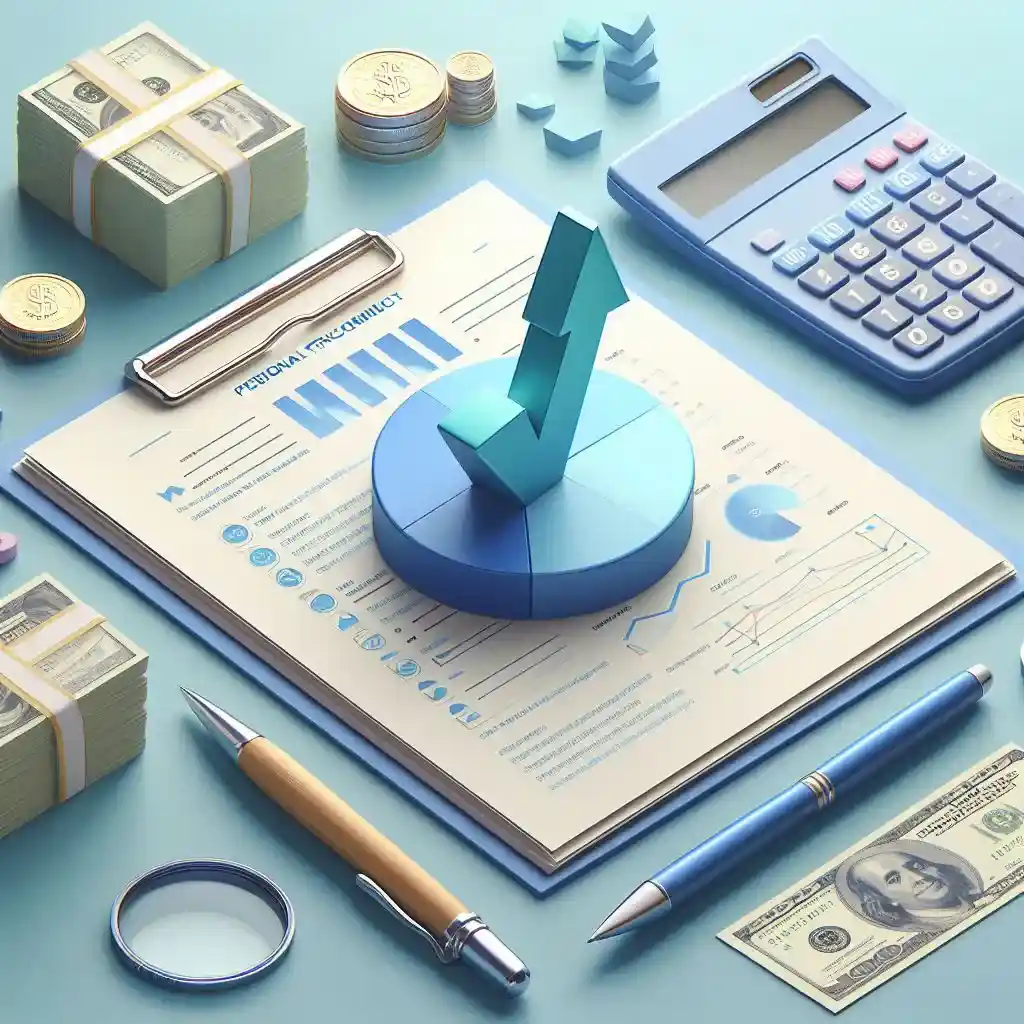Did you know that 70% of Americans have no personal financial statement? This is a big deal and shows we must handle our money better. A personal financial statement paints a clear picture of your finances. It helps you make smart choices and reach your money goals.

Need a loan, want to boost your credit, or understand your money better? You need a personal financial statement. It lists what you own, what you owe, what you earn, and spend. This way, you can see your financial health and plan for a better future.
Want to start but not sure how? We’re offering a free personal financial statement template! It includes all the important parts you need. The template is easy to use. You just fill in your financial details and see your financial status clearly.
Key Takeaways
- A personal financial statement is a comprehensive document that gives a detailed look at your finances, including what you have, what you owe, and your money in and out.
- It’s often needed by banks when you’re seeking a loan or credit. It shows you’re a reliable borrower.
- Using a template for your personal financial statement can make it simple to keep track of your money and make smart financial choices.
- A detailed personal financial statement can show you where you can do better with money, like cutting debt or saving more. It helps you plan to meet your money goals.
- By updating your personal financial statement regularly, you can keep your finances in check. This way, you make changes if needed to keep growing financially.
What is a Personal Financial Statement?
Definition and Purpose
A personal financial statement shows where you stand financially. It lists your assets and debts. It also shows your income and what you spend. Banks and other lenders may ask to see it before giving you a loan. They want to know if you can pay them back.
Benefits of Having a Personal Financial Statement
Making a personal financial statement helps you know your money situation. It lets you see your wealth and debts clearly. You can then set goals and check on your success. This statement is also good for loans. It helps the lender see if you’re able to pay them back.
How to Prepare a Personal Financial Statement

Gathering details for your personal financial statement is key. You need to account for your assets, liabilities, income, and expenses. This overview helps you see your financial situation clearly.
Gathering Required Information
Collect a list of your assets, liabilities, income, and expenses. Include their values. This will be the base of your statement.
Step-by-Step Guide
Creating a personal financial statement follows the steps:
- Identify and list all assets, like bank accounts and real estate.
- Find your liabilities, such as loans and bills.
- Determine your net worth by balancing your assets and liabilities.
- List your monthly income from jobs, bonuses, and other earnings.
- Document your monthly expenses, including rent and bills.
- Figure out your net profit or loss using your income and expenses.
With this detailed information, you can understand your finances better. You’ll have a clear personal financial statement.
Personal Financial Statement Template
A personal financial statement template is very helpful. It helps people fully document their financial situation. This includes assets, liabilities, net worth, income, and expenses. With this tool, you can really know where you stand financially. It helps you make smarter choices with your money.
Key Components
This template covers important areas of your finances. It includes:
- Assets like cash, investments, and more
- Liabilities such as loans and mortgages
- Your Net Worth (assets minus liabilities)
- Your Income from work and other sources
- Expenses on things like rent and car payments
Customization Options
You can change the template to fit your needs and what you value. Add things like detailed investments or insurance. This makes your financial picture clearer and more personal.
Free Templates and Resources
Many free templates are available online, including one from LiftFund. They organize your assets and debts neatly. This makes it easier to manage your money and plan for the future.
Assets to Include in a Personal Financial Statement
When you make a personal financial statement, list all your assets carefully. These are things you own that are worth money. They can be money in bank accounts, your house, or even things like jewelry.
Cash and Cash Equivalents
First, write down all the money you have. This includes cash on hand and in checking accounts. Also, savings accounts and other types of money accounts should be counted. Knowing how much money you can quickly get is very important.
Investments and Retirement Accounts
List what you have in investment accounts. This might be in stocks, ETFs, or others. Don’t forget about your retirement accounts like 401(k)s and IRAs. These are key for your future money plans.
Real Estate and Personal Property
Don’t overlook your real estate. This is your house and any other land or buildings you own. Also, remember any big assets like cars, boats, or valuable collectibles.
Listing all your assets helps you see your full financial picture and how much you’re worth.
Liabilities to Include in a Personal Financial Statement
When you list everything you owe on a personal financial statement, it helps see your true net worth. These include debts like what you owe on credit cards, student loans, and any unpaid taxes. Knowing your liabilities is key to understanding your money situation.
Loans and Credit Card Debt
Loans and credit card debts are big parts of your financial picture. Note what you owe on credit cards, car or student loans. Make sure to include the amount and interest rates. They affect your financial situation and your financial health.
Mortgages and Leases
Be sure to list any mortgages or rental agreements as well. Include your home’s remaining mortgage and other loans. Remember, these debts shape your long-term finances.
Listing your debts helps you see your total financial burden. Then, you can focus on paying off what you owe. This can help you grow your net worth and improve financially.
Calculating Net Worth and Income
Net Worth Calculation
A person’s net worth is their value after subtracting what they owe. You can find it by doing this math: [Total Value of Assets ($) – Total Value of Liabilities ($) = Net Worth ($)]. This shows how well you are doing financially and helps you see if you’re doing better over time.
Check out our comprehensive guide “How to Calculate Net Worth” for detailed guidelines.
Income Statement
Income is all the money you make, like your pay, bonuses, or money from investments. But spending is also important. It includes how much you pay for daily life and other bills. By writing down your income and everything you spend on, you see if you have money left over. This info is key for smart money plans.
When to Use a Personal Financial Statement
A personal financial statement is important in many instances. It’s key when asking for credit or a loan. Financial institutions use this info to check if we can pay back the money.
It’s also useful for keeping track of our money. By updating our statements often, we see our assets and debts change. This can guide our financial decisions, helping us reach our goals.
In the end, a personal financial statement gives us a clear view of our money. It helps whether we need a loan or just want to manage our finances better. This statement supports our path to financial health and achievement.
